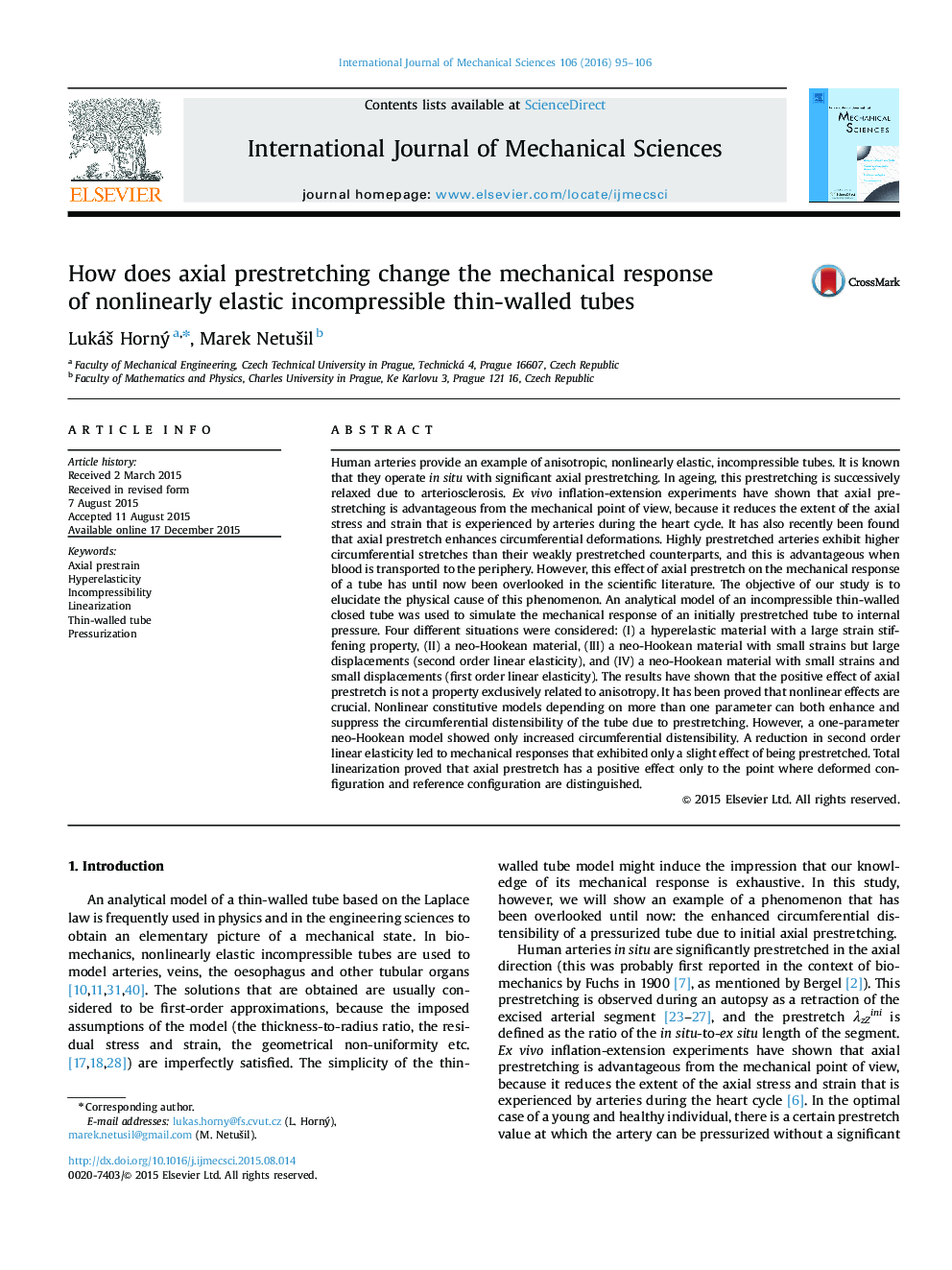| Article ID | Journal | Published Year | Pages | File Type |
|---|---|---|---|---|
| 7174165 | International Journal of Mechanical Sciences | 2016 | 12 Pages |
Abstract
Human arteries provide an example of anisotropic, nonlinearly elastic, incompressible tubes. It is known that they operate in situ with significant axial prestretching. In ageing, this prestretching is successively relaxed due to arteriosclerosis. Ex vivo inflation-extension experiments have shown that axial prestretching is advantageous from the mechanical point of view, because it reduces the extent of the axial stress and strain that is experienced by arteries during the heart cycle. It has also recently been found that axial prestretch enhances circumferential deformations. Highly prestretched arteries exhibit higher circumferential stretches than their weakly prestretched counterparts, and this is advantageous when blood is transported to the periphery. However, this effect of axial prestretch on the mechanical response of a tube has until now been overlooked in the scientific literature. The objective of our study is to elucidate the physical cause of this phenomenon. An analytical model of an incompressible thin-walled closed tube was used to simulate the mechanical response of an initially prestretched tube to internal pressure. Four different situations were considered: (I) a hyperelastic material with a large strain stiffening property, (II) a neo-Hookean material, (III) a neo-Hookean material with small strains but large displacements (second order linear elasticity), and (IV) a neo-Hookean material with small strains and small displacements (first order linear elasticity). The results have shown that the positive effect of axial prestretch is not a property exclusively related to anisotropy. It has been proved that nonlinear effects are crucial. Nonlinear constitutive models depending on more than one parameter can both enhance and suppress the circumferential distensibility of the tube due to prestretching. However, a one-parameter neo-Hookean model showed only increased circumferential distensibility. A reduction in second order linear elasticity led to mechanical responses that exhibited only a slight effect of being prestretched. Total linearization proved that axial prestretch has a positive effect only to the point where deformed configuration and reference configuration are distinguished.
Related Topics
Physical Sciences and Engineering
Engineering
Mechanical Engineering
Authors
LukáÅ¡ Horný, Marek NetuÅ¡il,
